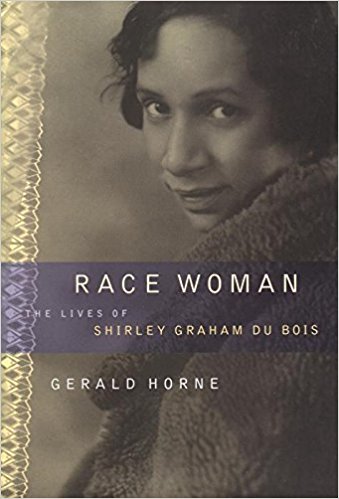About
Shirley Graham Du Bois is not the first name that comes to mind when one thinks of the Harlem Renaissance era, but her compositions and other works should be valued as much as the more popular contributors of the time. Shirley Graham Du Bois was born in Evansville, Indiana, but she spent much of her early years traveling and seeing the different perspectives on life around the country, especially from the African American point of view (Phelps). There are few actual sources dedicated to her earlier life, but there were some records kept that showed just how important the lives of all African American citizens were to her. She went out of her way to put the people in a positive light. Du Bois, Graham at the time, later married W. E. B Du Bois, who had always been an influential figure in her life. He was actually a mentor of sorts, and he had a great impact on her writing and activism.
The Harlem Renaissance was a time when African Americans strived to create an identity through art and literature, while also battling the nation’s urge to erase anything that African Americans could be proud of. The heritage remained an important part of the artistic movement, which is why it faced some backlash in making its mark in history (Floyd, 2). Du Bois contributed to the Harlem Renaissance movement in most every way possible. She was not only known as a composer, but also as an author, activist, and playwright. She was quoted saying: “my purpose is to dispel ignorance and misunderstanding around the Negro people themselves, and in their relations with others outside their race.” (Phelps). She took many strides towards creating an African American identity within the realm of the fine arts. She studied music in Paris, which presumably had a massive effect on her composition style, and she returned to study music at Oberlin. During this time, she developed her musical play into one of the first operas that highlighted the African American race not only in characterization, but in the music as well. This opera was called Tom-Tom, and it received high praises when it premiered in Cleveland in 1932 (McFadden). Despite the opera having good reviews, it never really made it into the popular sphere, which further highlights the battle that African Americans had to face when creating an identity within the artistic realm. While they may not be too well known now, her contributions during the Harlem Renaissance were a large part of the voice that African Americans were creating for themselves.
—Tori Darnell (Christie Finn, ed.)
This biographical essay is made possible because of the Song of America Initiative for African-American Classic Song, a collaboration between the Hampsong Foundation and Dr. Scott Piper’s Winter 2016 course “The Art Songs of African American Composers” at the University of Michigan in Ann Arbor.
Bibliography:
Floyd, Samuel A. Black Music in the Harlem Renaissance: A Collection of Essays. New York: Greenwood, 1990. Print.
McFadden, Alesia E. The Artistry and Activism of Shirley Graham Du Bois: A Twentieth Century African American Torchbearer. Amherst, Mass: University of Massachusetts Amherst, 2009. Internet resource. Retrieved from U Mass Libraries.
Phelps, Shirelle. Contemporary Black Biography: Profiles from the International Black Community, Vol. 21. Detroit, MI: Gale, 1999. Web. 05 March 2016.
Wright, Josephine. “Du Bois, Shirley (Lola) Graham.” Grove Music Online. Oxford Music Online. Oxford University Press. Web. 7 July 2017.


